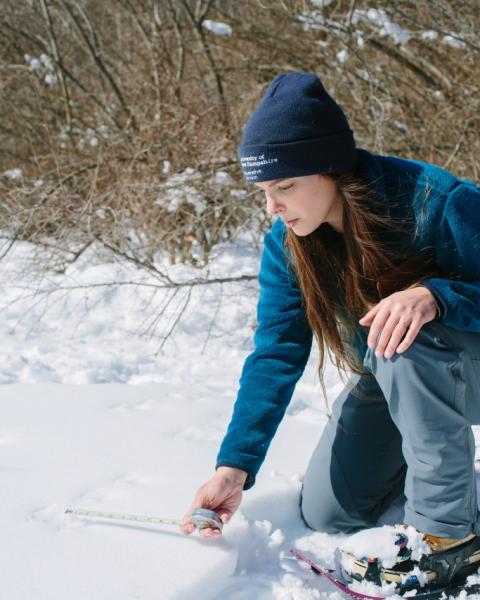Recommended Flowering Plants and Groundcovers for Wildlife
Woody Groundcovers for Wildlife -‐ Native to the Northeast
Many of these groundcovers provide food and year-‐round cover at ground level for small wildlife.
- American Cranberry, Vaccinium macrocarpon
- Bearberry, Arctostaphylos uva-‐ursi
- Bunchberry, Cornus canadensis
- Dwarf huckleberry, Gaylussacia dumosa
- Juniper (several), Juniperus spp.
- Leatherleaf, Chamaedaphne calyculata
- Little Henry Sweetspire, Itea virginica
- Low bush blueberry, Vaccinium angustifolium
- New Jersey Tea, Ceanothus americanus L.
- Partridgeberry, Mitchella repens
- Sheep Laurel, Kalmia angustifolia
- Wintergreen, Gaultheria procumbens
Flowering Perennials and Groundcovers for Wildlife -‐ Native to Northeast or U.S.
There are over 100 species of bees in NH in addition to other pollinators such as butterflies and moths, each with unique characteristics including foraging distances, length of tongue, nesting habitat, and season of greatest activity. To benefit the greatest diversity of pollinators:
-‐provide flowers throughout the season
-‐provide a mix of flower shapes to suit different insect species
Use this list as a guide to maximize the variety of insects in your garden. A variety of insects will lead to a diversity of wildlife that eat insects such as bats, birds, amphibians, and others.
Early-‐Season Bloomers (April-‐June)
- Allium (several), Allium spp.
- Atlantic Camas, Camassia scilloides
- Barren Strawberry, Waldsteinia
- Bloodroot, Sanguinaria canadensis L.
- Common Lungwort, Pulmonaria officinalis L.
- Crested Iris, Iris cristata
- Dutchman Breeches, Dicentra cucullaria
- Foamflower, Tiarella
- Marsh Marigold, Caltha
- Mayapple, Podophyllum
- Phlox (several), Phlox
- Squill, Scilla Siberica
- Spring Beauty, Claytonia virginica
- Strawberry, Fragularia
- Trillium (several), Trillium
- Trout Lily, Erythronium
- Twinleaf, Jeffersonia
- Violet (several), Viola
- Virginia Bluebell, Mertensia virginica
Mid-‐Season Bloomers (Mid-‐June – Mid-‐August)
- Beardtongue, Penstemon
- Beebalm, Monarda
- Black Cohosh, Black Snakeroot, Actaea (Cimicfuga)
- Black-‐eyed Susan, Rudbeckia
- Blue Flag Iris, Iris versicolor
- Butterfly Weed, Asclepias tuberosa
- Catmint, Nepata
- Clover (Red), Trifolium pretense
- Columbine, Aquilegia
- Common Milkweed, Asclepias L.
- Cranesbill Geranium, Geranium maculatum
- Daisy (several), Chrysanthemum
- False Blue Indigo, Baptisia
- Foxglove, Digitalis
- Lupine, Lupinus
- Mountain-‐mint, Pycnanthemum
- Ornamental Onion, Allium
- Pennsylvania Sedge, Carex
- Phlox (several), Phox
- Indian paintbrush, Castilleja
- Red Valerian, Centranthus
- Sedum (several), Sedum
- Swamp Milkweed, Asclepias incarnata
- Thyme, Thymus
- Wild Bergamot, Monarda fistulosa
- Yarrow, Achillea
Late-‐Season Bloomers (August -‐Oct)
- Aster (several), Symphyotrichum
- Blazing Star, Liatris
- Cardinal Flower, Lobelia
- Coneflower, Echinacea
- Goldenrod, Solidago
- Hyssop, Agastache
- Joe-‐Pye-‐Weed, Eupatorium
- Little Blue Stem, Schizachyrium scoparium
- Mint, Mentha
- Phlox (several), Phlox
- Black-‐eyed Susan, Rudbeckia
- Sedum (several), Sedum
- Turtlehead, Chelone
- Sunflower, Helianthus

